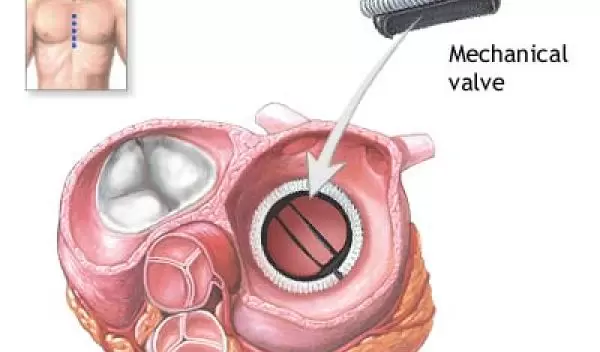
Artificial Heart Valves Face the Curdled Milk Test
Before a new medical device can be tested in human clinical trials, it must first pass painstaking inspection by the doctors and engineers who designed it. Thanks in part to one National Science Foundation (NSF) funded graduate student, new artificial heart valves could soon face preclinical testing that better predicts how the devices will work inside the body.
Heart valves usher blood through the heart, opening to allow blood in and then sealing tightly as it is pumped out to prevent it from flowing backward. Faulty or diseased valves sometimes fail to seal, allowing blood to regurgitate. To compensate, the heart must work harder to circulate blood throughout the body.
In the 1950s, Dr. Charles Hufnagel replaced a patient's diseased valve with a plastic one. It was the first successful implantation of an artificial, moving body part. Now, more than 80,000 Americans receive artificial valves every year, according to the American Heart Association. Replacements use mechanical valves or animal tissue.
Like their natural counterparts, artificial valves open and close each time the heart beats--about 100,000 times a day. Replacement valves have to be hardy, able to withstand decades of wear inside the body.
But durability is not the only concern. In mechanical valves, edges create a shearing force on blood as it passes through, triggering clots that can cause stroke. To offset this risk, patients who receive mechanical valves must take anticoagulant drugs for the rest of their lives.
Engineers have refined the original artificial valve into dozens of variations, each designed to minimize the clotting effect, which tends to get worse the longer the device is in the body. Testing the valves, however, has proved challenging.
In 2000, Aimee Martin set out to find a research project for her graduate studies in bioengineering and stumbled upon a group of Scottish engineers looking for a way to test medical devices with a cheap substitute for human blood. Since the mid-1980s, the group had been testing a protein-rich liquid that flowed like blood, splattered like blood and--crucially--congealed like blood.
The mystery ingredient? Milk.
Scotland is a long way from her native Massachusetts, but Martin was intrigued. With the help of an NSF Graduate Research Fellowship, she joined the group of researchers at the Institute for Materials and Processes at Scotland's University of Edinburgh. They were beginning to study whether pumping milk through an artificial heart chamber could pinpoint flaws in mechanical valves.
Existing methods for testing heart valves were expensive and sometimes failed to detect problems that surfaced later in clinical trials.
Using blood outside the body, Martin says, is tricky. "Blood wants to clot when it's exposed to air. To prevent it from doing that, you have to add an anticoagulant, and then you have to add a chemical right back into [the blood] before the experiment to initiate clotting," she explains. At that point, "you're no longer working with human blood in the native state."
To avoid these problems, researchers have traditionally tested artificial valves in large mammals like sheep before conducting human clinical trials. But raising the test animals is expensive, and they provide an imperfect substitute for the human cardiovascular system.
By the time Martin joined the lab, the Edinburgh researchers had already shown that milk--after the addition of a curdling agent like rennet--flows and clots like blood. One of Martin's first contributions was to improve the device for testing artificial valves. She designed a breadbox-sized machine rigged to circulate blood much like the heart does.
"I made it much more like a heart, in terms of shape and flexibility," than previous heart chamber models, Martin says. "It could expand and contract like the human heart."
Next, Martin tested 12 valve models inside the heart simulator, paying special attention to the positions on each valve where milk tended to clump. After testing each valve, Martin compared her results with what was already known from human clinical trials.
In each case, milk congealed in the same locations on the valves where blood had been shown to clot in clinical trials. By testing future heart valve models with the milk system, Martin hopes, researchers will spot defects before clinical trials begin--saving money and reducing the risk to patients.
Even small changes in the way blood flows through the heart can sometimes cause clots. Engineers can identify potentially dangerous flow patterns by adding microscopic particles to the liquid and then observing the movement of these particles. But first, says Martin, "they need to know exactly where to focus the study. Milk tests can be used to identify where to focus these fluid mechanics studies."
Each year, NSF's Graduate Research Fellowship program provides up to three years of support to about 1,000 science, math and engineering students doing research-based graduate work. For her part, Martin is now conducting postdoctoral work at the University of Edinburgh medical school, where she is investigating ways to engineer human bone tissue.
-- Sarah Goforth